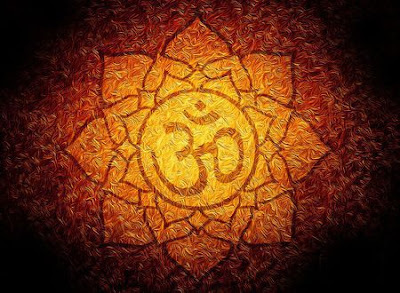Sanatana Dharma 101 – Essence & Essentials: Chapter 1 Introduction
 Prelude
PreludeOver the course of last month, Igot various emails and DMs (527 in number, to be precise) asking me to write onSanatana Dharma, explaining it to a beginner - a sort of introduction guide toexplain to modern-day kids, understanding the essentials and essence in simplelanguage. On a side note, my earlier articles were well received and readwidely over - Thank you !
With this background, I wanted toattempt explaining Sanatana Dharma (and it is not Hinduism, will do an articlelater dwelling on this topic). This series, Sanatana Dharma 101: Essence &Essentials, divided into 10 articles, is written based on my knowledge,research, and personal understanding of Sanatana Dharma. My intent is topresent its core principles in a simple and accessible manner, especially forbeginners and children.
While I strive for accuracy anddepth, I do not claim to be the sole expert on this vast and timelesstradition. Sanatana Dharma is an ocean of wisdom with countlessinterpretations, and I encourage readers to explore further, question, and seektheir own understanding.
This is a humble effort to sharewhat I have learned, and may not fully encompass the depth of knowledge we aredealing with, and I welcome discussions, insights, and perspectives that enrichour collective journey in discovering the eternal truth.
Chapter 1: IntroductionSanatana Dharma, often called theeternal way of life, is not just a religion but a philosophy that guideshumanity toward truth, righteousness, and harmony with the universe. Unlikefixed doctrines, it is a vast, living tradition that embraces change whileholding onto timeless wisdom.
The term Sanatana means“eternal,” and Dharma refers to the natural order, duty, and righteous path. Itis not about blind faith but about seeking truth through knowledge, experience,and self-realization. The core principles of Sanatana Dharma are compassion,respect for all living beings, self-discipline, and the pursuit of spiritualwisdom.
It does not have a single founderor a fixed scripture but is built upon the Vedas, Upanishads, Ramayana,Mahabharata, Bhagavad Gita, and many other sacred texts. These texts do notimpose rigid beliefs but offer guidance to understand life, the universe, andour purpose.
This series will explore theessence and essentials of Sanatana Dharma in simple terms—helping beginners,especially children, grasp its fundamental teachings. From concepts like karma,dharma, and moksha to understanding Hindu deities, festivals, and rituals, wewill embark on a journey to uncover the eternal wisdom of this profound tradition.Explaining Life & Satisfaction to a Beginner.
Before we use complex words, andindulge in jargon, for someone new to this wisdom, I shall try to use simpleanalogies and relatable examples to introduce Sanatana Dharma, make themunderstand. Let’s break it down step by step in an easy and practical way – I shall address some basic questions first, let’sbegin:
1. What is Life?
(A) Life is Like a Movie
• Imagine you are watching amovie.
• Sometimes it’s happy, sometimesit’s sad, sometimes thrilling, sometimes boring.
• But you are not the movie—youare the one watching it.
Similarly, life is like a movie,but you are the witness (Atman).
• If you get too attached to themovie, you feel pain when bad things happen.
• But if you remember that youare only watching, you enjoy it without suffering.
(B) Life is Like a Journey
• Imagine you are on a long roadtrip.
• You pass through beautifulplaces and tough roads.
• But your goal is not to stay inone place forever, you keep moving.
Lesson: Don’t hold on tothings. Enjoy the journey, but don’t get stuck at a place.
2. Why Do People FeelUnsatisfied?
(A) The Monkey Mind – The Cupwith a Hole
• Imagine a monkey constantlyjumping from one tree to another—that’s how our mind works.
• It keeps thinking, “I wantthis, I want that.”
• But even when it gets what itwants, it starts craving something else.
Example:
• A child wants a toy → He getsit → After 2 days, he wants a new one.
• A man wants a car → He buys it→ After a year, he wants a better one.
This is like pouring water into acup with a hole—no matter how much you pour, it will never be full.
Lesson: Real satisfactioncomes not from getting more, but from fixing the hole (controlling desires).
3. Where Does True SatisfactionCome From?
(A) The Secret of the Ocean
• A small wave in the ocean keepsworrying:
• “I am so small!”
• “What if I disappear?”
• But it forgets that it is partof the vast ocean itself!
Lesson:
• You are not just this smallbody and mind, you are part of something vast & infinite (Atman)
• Once you realize this, allfears and desires disappear.
4. How to Be Satisfied in Life?
(A) Be Like the Sun, Not Like aCandle
• A candle always fears the windbecause it is small.
• But the sun never worriesbecause its light is infinite.
(B) Shift From “I Want” to “IHave”
• Instead of thinking about whatyou don’t have, focus on what you already have.
• A rich man with millions butalways wanting more is poorer than a simple man who is content.
Example:
• You breathe thousands of timesa day, but do you ever say “Thank you” for each breath?
• Satisfaction comes when we stopchasing and start appreciating.
Lesson:
• If your happiness depends on small things (money, status, opinions of others), you will always fear losing them.
• But if you realize your true nature (Atman), nothing can shake you.
5. Simple Daily Practices forSatisfaction ?
1. Morning Gratitude - Live the Day
• Every morning, say 3 things youare grateful for. You have a fresh start and a whole day to live for.
• This trains your mind to focuson what you have, not what you lack.
2. Live in the Present (Like aChild)
• Watch a small child playing—hedoesn’t worry about the future, he enjoys every moment.
• The more you live in thepresent, the more satisfied you feel.
3. Detach from Outcomes (BhagavadGita Wisdom)
• Do your duty, but don’t expecta fixed result.
• Life is like planting a seed—doyour best, but let nature take its course.
Lesson:
Satisfaction is not abouthaving more—it is about needing less
I urge you to dwell on thesethoughts, to begin with. And you may read the next chapter in my next article,to know/learn more



